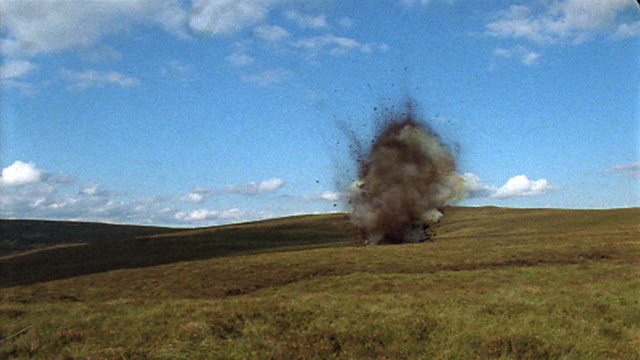
Moor repairs
An explosive method for restoring dried out moors sees its vital bogs and ditches return.
Our lonely moorlands might seem untouched by human hands, but we’ve brought our farm animals even here. At Kielder, in Northumberland – the wildlife had to make way as farming spread in the post-war years. Subsidies encourage people to dig drainage ditches, or burn off the heather - to provide better grazing for sheep. But drying out the moorland like this was bad news for the birds that came here to breed. They depended on the boggy ground and the small pools to provide them and their chicks with food. As the moors have dried out, bird numbers have plummeted. But all is not lost. Over the last few years the landowners here have been busy turning Kielder back into a haven for wildlife. The ditches have been allowed to fill in, the sheep have been moved off and the pools recreated using this, gelignite. If you want to make holes in the ground this is the stuff. It’s quick, effective, cheap and, to be perfectly honest, extremely good fun. All it needs is a bit of finishing off with my trusty spade and then when the autumn rains come it’ll fill up, be colonised by moisture-loving plants and insects and become where once was a bit of a desert, an oasis of life.
Duration:
This clip is from
Featured in...
![]()
����ý Nature
Be captivated, informed and inspired by the world's wildlife.
More clips from Modern Times
-
![]()
Caring for the country
Duration: 04:21
-
![]()
Coastal buffer
Duration: 01:55
-
![]()
Red squirrel Eden
Duration: 03:03
-
![]()
MOD cons
Duration: 03:51
More clips from British Isles: A Natural History
-
![]()
Gastronomic garden snails—Taming the Wild
Duration: 01:04
-
![]()
Canal plants—Revolution
Duration: 01:17
-
![]()
Japanese knotweed—Our Future
Duration: 03:20
-
![]()
Falcon quarry—Revolution
Duration: 01:44










